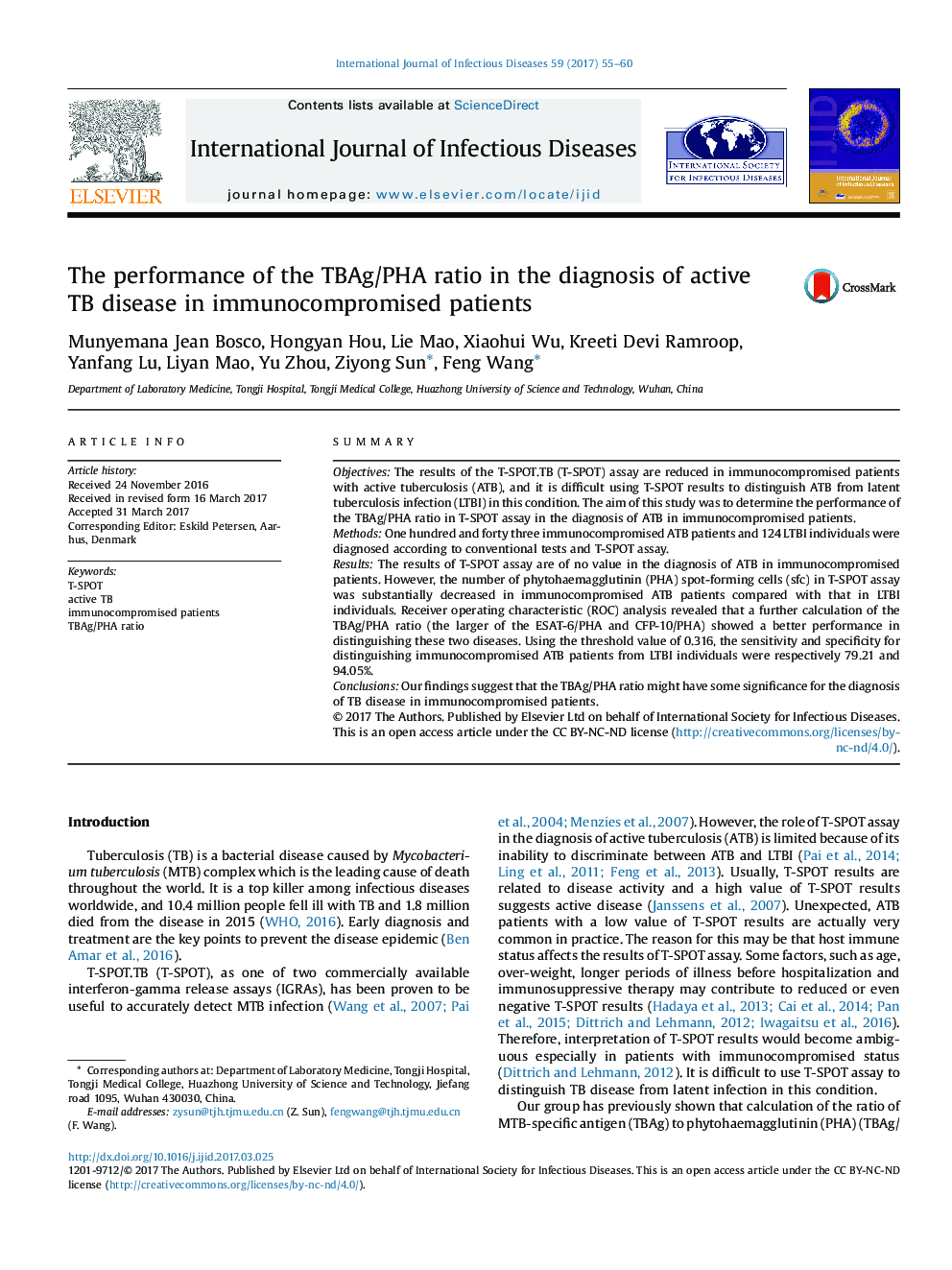| Article ID | Journal | Published Year | Pages | File Type |
|---|---|---|---|---|
| 5667207 | International Journal of Infectious Diseases | 2017 | 6 Pages |
â¢T-SPOT result has no value in the diagnosis of ATB in immunocompromised patients.â¢PHA results in T-SPOT assay can reflect the immunosuppression status in ATB patients.â¢The TBAg/PHA ratio can help to diagnose ATB disease in immunocompromised patients.
SummaryObjectivesThe results of the T-SPOT.TB (T-SPOT) assay are reduced in immunocompromised patients with active tuberculosis (ATB), and it is difficult using T-SPOT results to distinguish ATB from latent tuberculosis infection (LTBI) in this condition. The aim of this study was to determine the performance of the TBAg/PHA ratio in T-SPOT assay in the diagnosis of ATB in immunocompromised patients.MethodsOne hundred and forty three immunocompromised ATB patients and 124 LTBI individuals were diagnosed according to conventional tests and T-SPOT assay.ResultsThe results of T-SPOT assay are of no value in the diagnosis of ATB in immunocompromised patients. However, the number of phytohaemagglutinin (PHA) spot-forming cells (sfc) in T-SPOT assay was substantially decreased in immunocompromised ATB patients compared with that in LTBI individuals. Receiver operating characteristic (ROC) analysis revealed that a further calculation of the TBAg/PHA ratio (the larger of the ESAT-6/PHA and CFP-10/PHA) showed a better performance in distinguishing these two diseases. Using the threshold value of 0.316, the sensitivity and specificity for distinguishing immunocompromised ATB patients from LTBI individuals were respectively 79.21 and 94.05%.ConclusionsOur findings suggest that the TBAg/PHA ratio might have some significance for the diagnosis of TB disease in immunocompromised patients.
